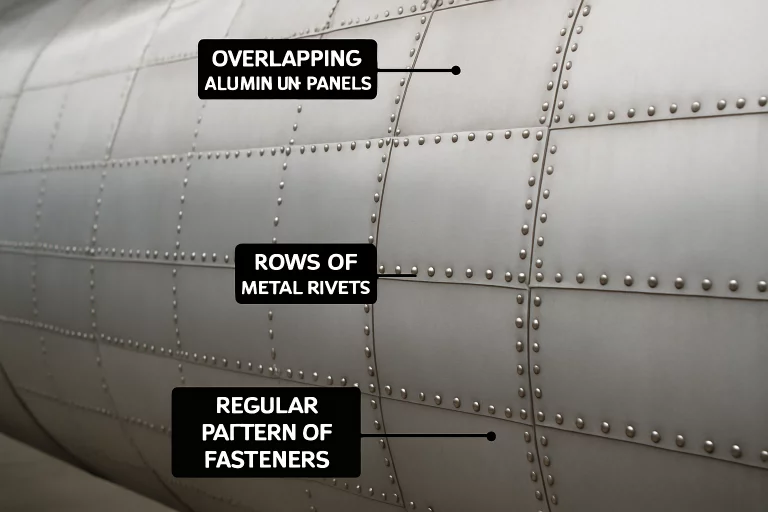Contents
The evolution of aircraft fastening methods reflects the technological advancements in aviation. Early methods used screws, bolts, and primitive rivets for low-speed airframes. As aircraft transitioned to all-metal construction, rivets became the preferred fastener. Over time, rivets have evolved, demonstrating their advanced capabilities in modern aerospace.
Riveting is crucial in aircraft assembly because it can handle aircraft-specific challenges like vibration, pressurization, and temperature differences. It distributes loads evenly and offers fail-safe characteristics. Today’s aircraft rely on thousands of rivets for safety and longevity.
Strength in Simplicity: Why Rivets Prevail
Rivets are strong, simple fasteners that create a fatigue-resistant joint by clamping metal sheets together mechanically. They are handy for aircraft construction, using minimal heat and ensuring maximum lightweight efficiency. Aircraft rivets also provide adaptability to changing environmental conditions, allowing structures to “breathe” and maintain their integrity even in extreme temperatures. They are essential for maintenance, allowing for non-destructive testing and targeted repairs, making them the cornerstone of ongoing aircraft airworthiness.

Modern Riveting Technologies and Techniques
In the modern high-tech world, riveting has evolved with automation, robotics, and digital manufacturing advancements. Major aircraft factories use robotic arms with precision sensors for consistent, high-speed riveting, minimizing human error and increasing production efficiency. Hybrid techniques, combining mechanical grip with high-tech adhesives, provide a smoother, more aerodynamic surface. Advances in corrosion-resistant coatings and fastener shapes make modern rivets more durable and longer-lasting. Aerospace engineers have an extensive selection of fasteners for specific load requirements and assembly methods.
Weighing Alternatives: Rivets vs. Welding and Adhesives
Welding is a popular fastening method in aircraft engineering due to its aesthetic appeal, but it can distort thin metals and conceal cracks. Adhesive bonding is used in aerospace niche applications, but may degrade over time and make repairs difficult. On the other hand, rivets have proven reliability due to their resistance to vibration, UV exposure, extreme temperatures, and straightforward repair processes, making them a preferred solution for primary structures.
Balancing Tradition and Innovation in Aircraft Design
Aircraft engineering combines traditional practices with innovative fastening materials and manufacturing methods. Modern rivets are lighter, stronger, and corrosion-resistant, with electroplating and hybrid surface treatments. Techniques like countersinking rivet heads and ultra-high-strength titanium have allowed designers to push speed and performance boundaries. These ultra-durable rivets withstand aerodynamic stresses, chemical, and temperature-related assaults.
Conclusion
In a rapidly evolving and safety-critical field as aviation, some traditions endure for very good reason. Rivets have proven unrivaled in their adaptability, ease of inspection, field reparability, and ability to withstand the toughest forces encountered in flight. Even as composite structures, new adhesives, and autonomous manufacturing techniques reshape the future of aerospace, the rivet remains a cornerstone, quietly holding it all together. By leveraging both trusted engineering principles and continuous innovation, rivets will continue to ensure safe, efficient, and cutting-edge aircraft operate across the world’s skies for decades to come.
13 thoughts on “Holding It All Together: Why Rivets Still Matter in Modern Aircraft Design”
Comments are closed.